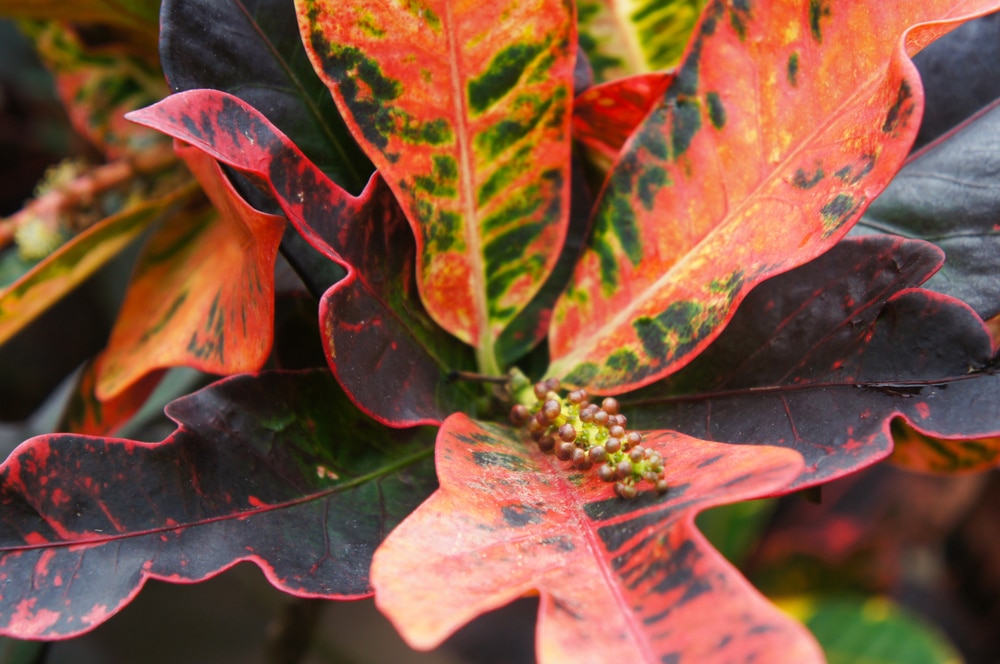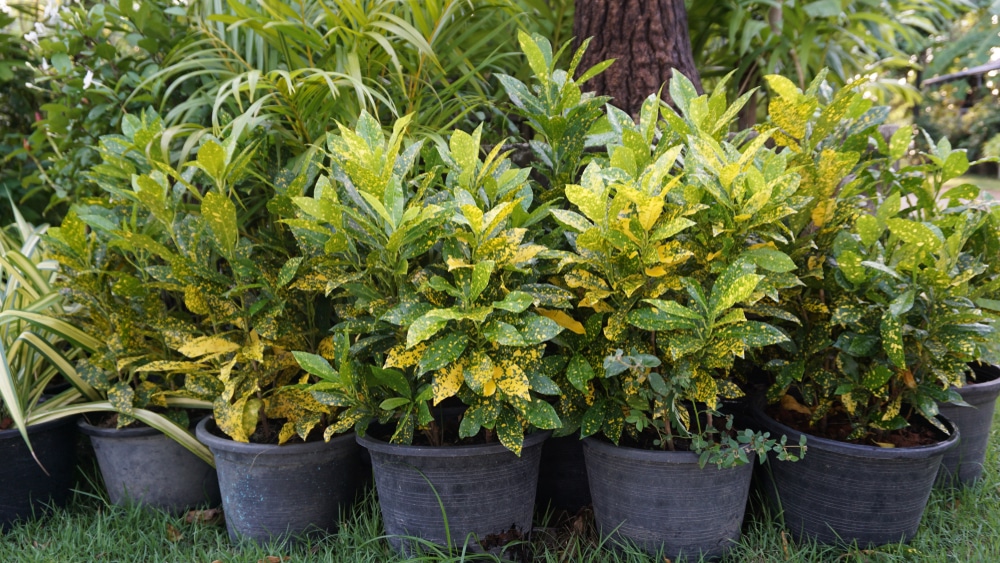Croton plants (Codiaeum variegatum) are popular indoor plants, but can they be successfully grown outdoors? This blog post will explore the answer to that question. First, we’ll look at the ideal growing conditions for croton plants.
Then, we’ll discuss what factors you need to consider before planting them outdoors. Finally, we’ll offer tips on caring for croton plants when they’re living outside. Let’s get started!
Can Croton Plants Live Outside?
Croton plants are a type of tropical plant that is native to Southeast Asia. They are known for their bright and colorful foliage, ranging in color from green to yellow to red. Croton plants can be grown indoors or outdoors, but they prefer warmer climates and will not tolerate cold temperatures.
Therefore, if you live in an area with cool winters, it is best to grow your croton plant indoors. However, if you live in areas with mild winters, you can grow your croton plant outside. Just be sure to bring it indoors if the temperature drops below 50 F.
What Are the Ideal Growing Conditions for Croton Plants?
Croton plants are tropical, so they need warm temperatures and lots of light. They like bright, indirect sunlight but can also tolerate full sun. They’re not fussy about soil pH or fertility level but require good drainage.
Temperature and Weather Conditions
Croton plants prefer temperatures between 60 and 85 F. If you live in an area that experiences cold winters, consider moving your plant indoors before temperatures drop below 50 F at night. Or consider protecting it with frost cloth and moving it indoors when the danger of frost arrives.
Croton plants have thick leaves that store water to keep their roots from drying out during drought, but they don’t like wet feet for long periods.
So, you’ll need to water your croton regularly when it’s growing outdoors during the spring and summer (especially if you’re growing it outside in a container). However, you’ll want to reduce watering when the plant is dormant during the fall and winter months.
Croton plants are susceptible to spider mite infestations, which can cause leaves to turn yellow or brown and may cause the plant to drop its leaves. Check your plant regularly for signs of an infestation, and treat with an insecticidal soap spray if you find evidence of a problem.
If your croton grows outdoors, it’s also susceptible to scale insects, which you can treat with horticultural oil sprays.
To keep your croton healthy, don’t overwater it during the winter months (when it’s dormant). And pay attention to signs of overwatering during the growing season: leaf tips that turn brown or curl; soft, mushy stems; or root rot are all signs of over-watering your plant.
Pots and Soil Conditions
To help prevent them from becoming waterlogged, make sure that you plant them in pots with drainage holes or in areas where the soil is well drained (such as raised beds).
Croton plants are heavy feeders; they need re-potting every year to remove any accumulated fertilizer salts in the soil. They also benefit from occasional fertilization with a balanced liquid fertilizer throughout the growing season.
Avoid planting crotons in small pots for their root systems because they tend to become pot-bound. A good rule of thumb is that if you’re using a container from last year, give your croton some fresh potting soil before re-potting it this year.
Also, if your container has drainage holes in the bottom, fill them with potting soil before re-potting, so moisture doesn’t drain out through these holes and leave your roots exposed to air drying when watering!
Conclusion
If you’re looking for an easy-to-care-for indoor plant, croton plants are a great option, but can croton plants live outside? Yes, your croton plant can thrive indoors and out with the right conditions and proper care. Many plants look good growing with Crotons in your yard.
There are many beautiful varieties of croton including the unique Croton Mammy plant.

